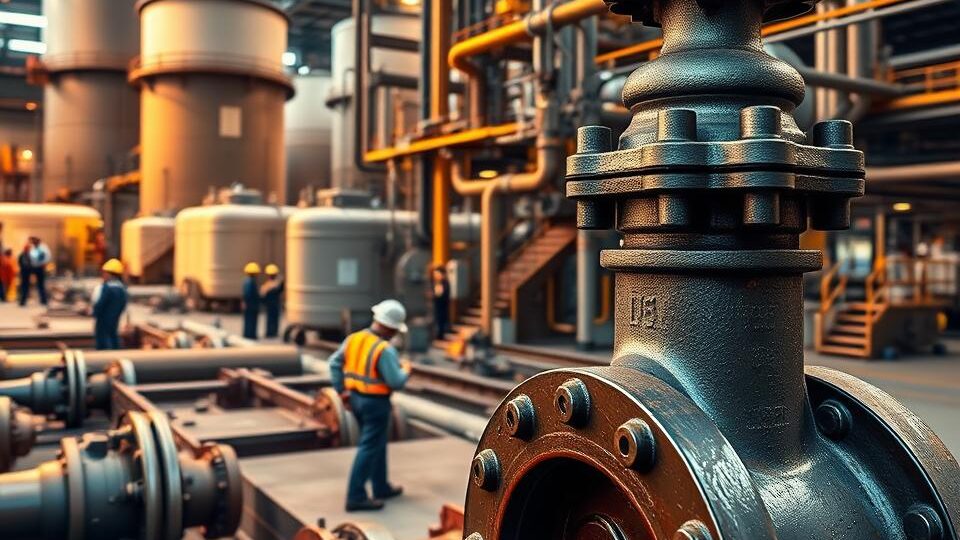
Troubleshooting Water Hammer in Gate Valve Systems
Cast Iron Gate Valves: Practical Features, Benefits, and Uses
Can one reliable valve reduce maintenance and extend system uptime?
At Yaxing Valve, we supply Cast Iron Gate Valve Manufacturer and back their quality and service for U.S. clients. This product line is built for long life in municipal and light industrial water systems.
Each unit pairs a sturdy iron body with a machined wedge track and easy handwheel control. The result is dependable shutoff, simple maintenance, and consistent performance in mechanical rooms, fire loops, and distribution networks.
I support specifiers with fast submittals and transparent details: diameters, ends, class ratings, and accessory options. We retain cart and preference data (cookies) to make reorders simple.
If you’re seeking a practical swap or economical pick for upcoming projects, compare my cast iron gate benefits with your current hardware to spot life-cycle value and practical fit.
Why Yaxing Valve Cast Iron Gate Valves Deliver Reliable Flow Control
I verify each Yaxing Valve product myself to confidently recommend it for demanding U.S. applications.
Industrial performance anchored by a robust cast-iron body
Each unit uses a robust cast-iron body to resist deformation under load. Metal-to-metal seating and precise machining ensure tight shutoff when customers need it most.

Designed to maximize flow with minimal pressure drop
A streamlined flow path cuts turbulence and pressure drop. This helps pumps operate efficiently while reducing energy consumption.
- I confirm dimensions and tests against ANSI standards and internal QA.
- I refine stem/wedge/bonnet interfaces to reduce friction and maintain consistent torque over time.
- I set body thickness targets for durability while keeping weight manageable for installers.
- Support docs include tests and standards to help procurement finalize quickly.
| Feature | Benefit | Spec Point |
|---|---|---|
| Cast-iron body | High structural strength | Stable geometry targets met |
| Streamlined gate | Less headloss | Supports pump efficiency |
| Stem & handwheel finish | Low-effort operation | Consistent torque, long life |
| Documentation | Quicker approvals | ANSI-referenced reports |
Cast Iron Gate Valves: Materials, Design, and Performance Essentials
I break down body, sealing, and stem options to simplify selection and ordering.
Body/Bonnet/Wedge Materials
Material stack-up: cast-iron body and bonnet, precision-machined wedge, metal-to-metal seat interface for dependable isolation across water service and general industry.
Stem/Handwheel configurations
I offer non-rising stem and inside screw stems for compact installations. Each screw thread form and packing arrangement is documented in my product details.
Performance limits and standards
I provide qualified pressure/temperature ranges and ANSI-aligned end connections to help engineers confirm fit without additional drawings.
- Handwheel and stem interface tuned for steady torque.
- Smooth internal geometry reduces headloss.
- Series codes with submittal-ready specs shorten ordering cycles.
| Component | Material/Type | Limit | Notes |
|---|---|---|---|
| Body and Bonnet | Cast-iron | Up to 150 psi | ANSI flange dimensions, welded/bolted options |
| Valve wedge | Machined metal | −20°–180°F range | Metal seat with low-loss finish |
| Stem | Non-rising / inside screw | Not pressure rated | Threads/packing documented |
| Product series | YX-100 / YX-200 | Sizes 2″–12″ | Part numbers simplify bidding |
Modern Applications, Install, and Operation
I help contractors and owners place these valves where they perform best in modern loops. My goal is to make selection, installation, and operating checks straightforward so crews finish commissioning without call-backs.
Applications in waterworks, buildings, and general industry
Use a full-bore unit where low restriction matters — long mains, service feeds, and bypass lines benefit the most.
Where vertical space is constrained, use non-rising or inside-screw stems in mechanical rooms and process loops.
Installation guidelines
Protect the valve body during handling; lift at rated points and avoid flange stress. Confirm end alignment before final bolt torquing to prevent leaks and distortion.
Select compatible gaskets, torque in a cross pattern, and space supports to prevent line sag.
Operation and maintenance notes
Place the handwheel for comfortable reach and confirm smooth movement after packing adjustments.
Do periodic under-pressure torque checks, inspect wedge/packing, and verify pressure/temperature versus media. Log tag numbers in your maintenance account and link work orders in your CMMS.
| Category | Action | Timing | Result |
|---|---|---|---|
| Use-case mapping | Use full-bore on mains; inside-screw/NRS in tight spots | Design stage | Reduced headloss and saved space |
| Handling & installation | Use lift points, align ends, torque in sequence | Install | Prevents flange stress and leaks |
| Operating checks | Check smooth handwheel feel and pressure-test | Commissioning & routine | Consistent operation and shutoff |
| Maintenance tracking | Tag valves and link to account/CMMS | Ongoing cycle | Quicker parts tracking/replacement |
Good handling and careful commissioning prolong service life and keep Resilient Seated Gate Valve in top shape.
Specify the Right Iron Gate Valve with Me at Yaxing Valve
Contact me with your line size, pressure expectations, and flow needs and I will match the exact series and type to your duty range and temperature limits.
My concise checklist speeds approvals: end type, inside-screw vs non-rising, and handwheel orientation. I record stem/handwheel and screw details to guide installation.
See the gallery for high-res images and layout views that show clearance and operator reach. Make an account to save specs, tag valves, and link drawings plus a one-page field PDF.
Reach out for a quick quote—I’ll confirm stock, lead times, series alternatives, and help you finish the order while you review the gallery. Cookies are only used to keep your session and cart ready.